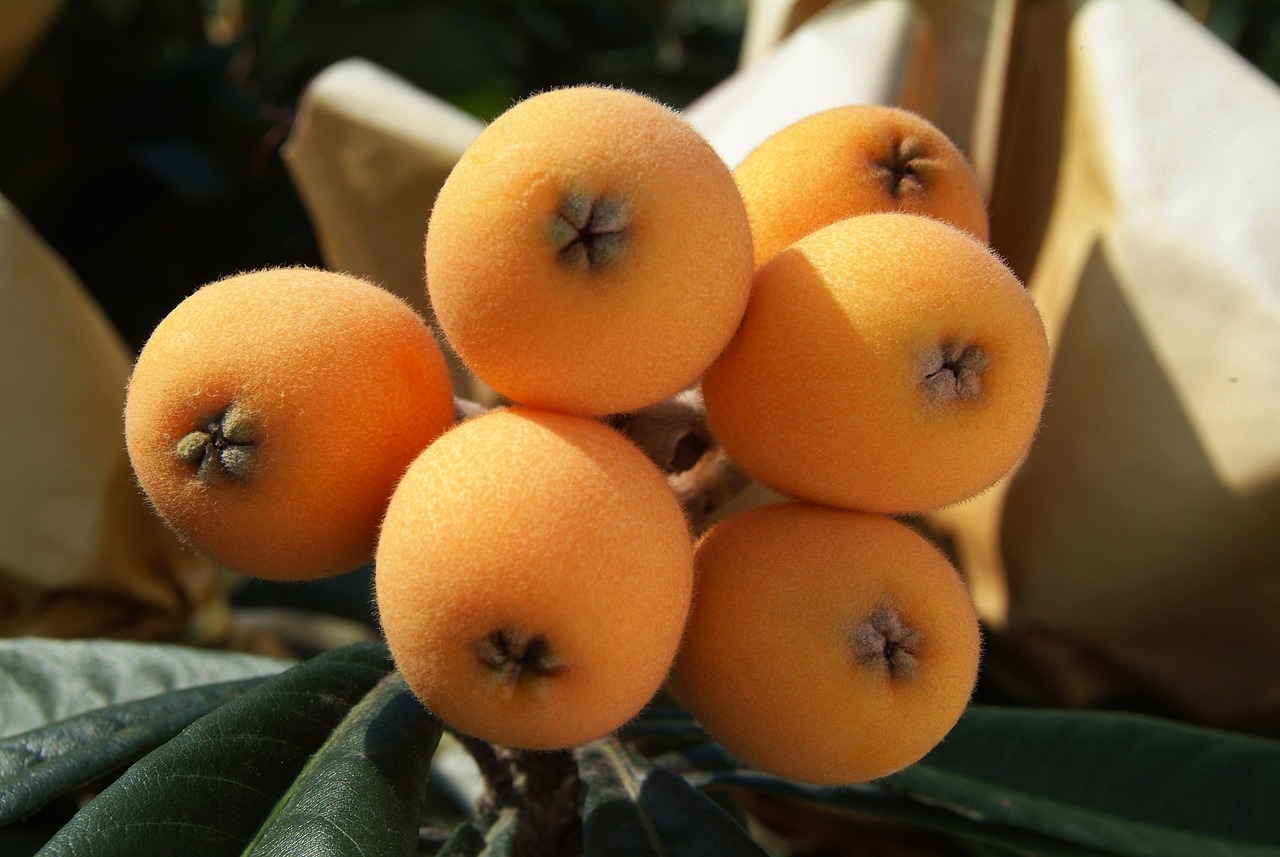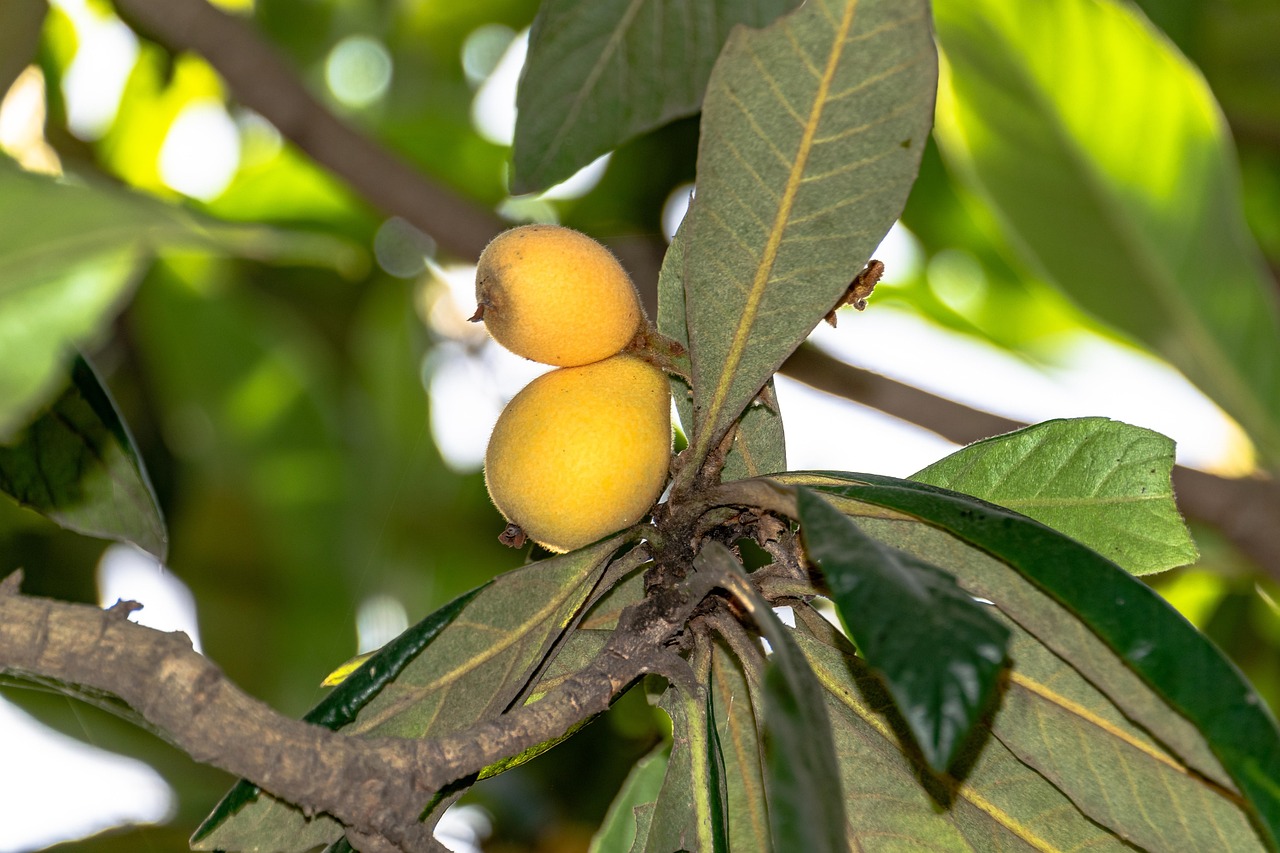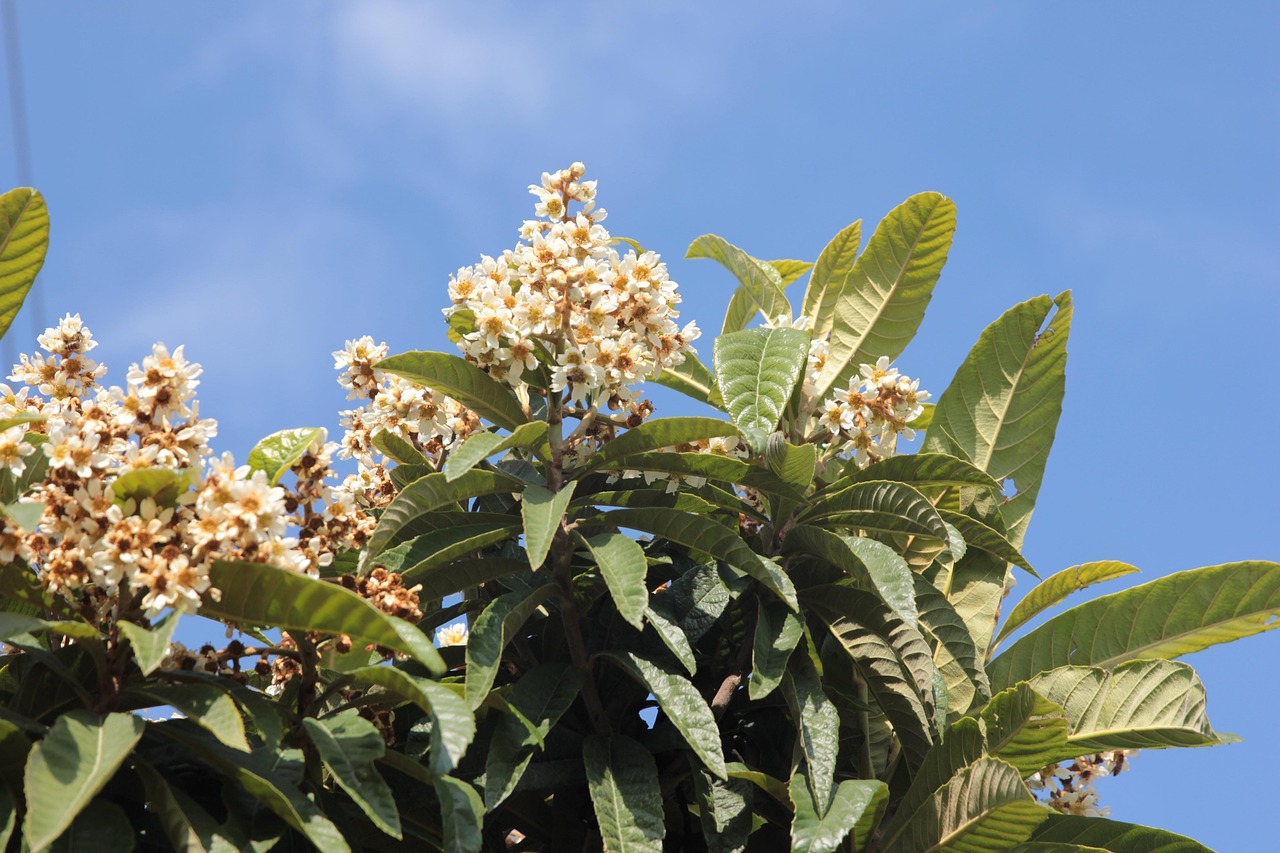Loquat trees typically grow at a moderate rate, reaching about 10 to 15 feet in height within 5 to 10 years. Harvest times for loquats occur in late spring to early summer, generally from April to June, depending on the climate and specific variety.
Loquat trees, known scientifically as Eriobotrya japonica, are cherished for their fragrant flowers and sweet, tangy fruit. Native to Southeast Asia, they thrive in subtropical and mild temperate climates. These trees have gained popularity in various regions due to their ornamental value and delicious fruit. Understanding their growth rate and harvest times is crucial for gardeners and fruit enthusiasts alike.

The loquat tree can be an excellent addition to home gardens. They are relatively low-maintenance and can adapt well to different soil types. However, factors such as climate, soil quality, and care practices can significantly influence their growth rate and fruiting schedule.
Growth Rate of Loquat Trees
Loquat trees are known for their steady growth. On average, they can grow between 1 to 2 feet per year under optimal conditions. Below are some factors that affect the growth rate:
- Climate: Loquats prefer mild winters and warm summers. Extreme temperatures can stunt their growth.
- Soil Quality: Well-draining soil rich in organic matter promotes faster growth.
- Watering: Regular watering during dry periods is essential for healthy growth.
- Sunlight: Full sun exposure encourages vigorous growth and fruit production.
Typically, loquat trees will reach maturity within 3 to 5 years after planting. At this stage, they can begin to bear fruit. However, it is essential to provide proper care during these formative years to ensure they develop strong roots and a healthy structure.

Harvest Times for Loquat Trees
The harvest time for loquats varies based on the variety and local climate conditions. Generally, loquats ripen between late April and early June. The following table provides an overview of common loquat varieties and their respective harvest times:
| Variety | Harvest Time | Fruit Characteristics |
|---|---|---|
| Gold Nugget | Late April – Early May | Sweet, juicy, yellow-orange fruit |
| Evergreen | May – June | Firm, tangy, larger fruit |
| Japanese Loquat | Mid May – June | Small, sweet fruit with a unique flavor |
When harvesting loquats, it’s important to look for fruits that have turned a bright yellow or orange color. They should also yield slightly to gentle pressure. Picking loquats too early can result in a tart taste, while overripe fruits may become mushy.
After harvesting, loquats can be enjoyed fresh or used in various recipes such as jams, jellies, and desserts. Their delightful flavor makes them a versatile ingredient in both sweet and savory dishes.

Caring for your loquat tree throughout its growth cycle will ensure a healthy yield. Proper fertilization, pest control, and pruning can help maximize both the growth rate and the quality of the fruit produced. Understanding these aspects will enhance your gardening experience and improve your chances of enjoying delicious loquats each year.
Optimal Conditions for Growing Loquat Trees
To cultivate loquat trees successfully, it is essential to provide optimal growing conditions. These trees thrive in environments that mimic their native habitats. Here are the key factors to consider:
- Climate: Loquat trees prefer mild, frost-free climates. They can tolerate temperatures as low as 20°F, but prolonged exposure to freezing conditions can damage the tree.
- Sunlight: Full sun is ideal for loquats. They need at least six hours of direct sunlight each day for healthy growth and fruit production.
- Soil Type: Well-draining soil is crucial. Loquats prefer sandy loam or slightly acidic soils with good organic matter.
- Watering: Regular watering is necessary, especially during dry spells. However, avoid waterlogging, as this can lead to root rot.
Understanding these conditions will help you create an environment where loquat trees can flourish. Each factor works together to promote healthy growth and maximize fruit yield.
Soil Preparation for Loquat Trees
Before planting loquat trees, proper soil preparation is vital. The following steps can help ensure that your soil is suitable for optimal growth:

- Testing Soil pH: Conduct a soil test to determine the pH level. Loquats thrive in slightly acidic to neutral pH levels (between 6.0 and 7.0).
- Amending Soil: If necessary, amend the soil with organic matter, such as compost or well-rotted manure, to improve fertility and drainage.
- Tilling: Break up compacted soil through tilling to enhance aeration and root penetration.
- Drainage: Ensure good drainage by installing raised beds or mounds if your soil tends to retain water.
By preparing the soil correctly, you lay a strong foundation for your loquat trees, promoting healthy growth and fruiting potential.
Pest and Disease Management
Like any fruit-bearing tree, loquats are susceptible to pests and diseases. Recognizing potential threats early can help mitigate damage. Here are some common pests and diseases affecting loquat trees:
Common Pests
- Leaf Spot: Caused by fungal pathogens, this disease leads to brown spots on leaves, which may eventually drop.
- Scale Insects: These pests suck sap from the tree, weakening it and causing leaf drop.
- Aphids: Small insects that feed on new growth, resulting in curling and wilting leaves.
Disease Management Strategies
To manage pests and diseases effectively, consider the following strategies:
- Cultural Practices: Maintain good hygiene by cleaning up fallen leaves and debris around the tree.
- Pest Control: Use insecticidal soaps or neem oil to control infestations of pests like aphids and scale insects.
- Fungicides: Apply fungicides at the first sign of leaf spot to prevent further damage.
Regular monitoring and proactive measures can significantly reduce the impact of pests and diseases on loquat trees.
Pruning Techniques for Loquat Trees
Pruning is an essential practice for maintaining the health and productivity of loquat trees. Proper pruning encourages better air circulation and sunlight penetration, which are vital for fruit development. Here are some important pruning techniques:
- Timing: The best time to prune loquat trees is after the fruit has been harvested, typically in late summer or early fall.
- Selective Pruning: Remove any dead or diseased branches to promote overall health.
- Crown Thinning: Thin out crowded branches to allow for better light exposure and air flow.
- Shaping: Shape the tree to maintain a desirable form and height, making harvesting easier.
The right pruning techniques will enhance the tree’s structure and help maintain its vigor over the years.
Nutritional Needs of Loquat Trees
Nourishing your loquat trees with the right nutrients is essential for robust growth and fruitful harvests. Fertilization plays a significant role in meeting these nutritional needs. Here are some key considerations:
- Nitrogen: Promotes healthy foliage growth. Apply a nitrogen-rich fertilizer during the growing season.
- Phosphorus: Supports root development and flower formation. A balanced fertilizer with phosphorus will help during early spring.
- Potassium: Enhances fruit quality and resistance to disease. Ensure adequate potassium levels throughout the growing season.
A regular fertilization schedule can help keep your loquat trees healthy and productive, ensuring a bountiful harvest each year.
Common Varieties of Loquat Trees
When selecting loquat trees for cultivation, it is important to consider the various varieties available. Each type has its own unique characteristics, including growth habits, fruit flavor, and harvest times. Understanding these differences can help gardeners choose the best variety for their specific conditions and preferences.
Popular Loquat Varieties
- Champagne: Known for its sweet, juicy fruit, the Champagne variety produces large clusters of loquats. It is favored for its smooth skin and excellent flavor.
- Gold Nugget: This variety is appreciated for its rich taste and vibrant yellow fruit. It typically ripens early in the season, making it a popular choice for home growers.
- Evergreen: Evergreen loquats are known for their large, firm fruits with a tangy-sweet flavor. They are also more tolerant of cooler temperatures compared to other varieties.
- Japanese Loquat: This variety is recognized for its smaller, aromatic fruit that has a distinct flavor. It tends to have a compact growth habit, making it suitable for smaller gardens.
Choosing the right variety can significantly impact the success of your loquat cultivation. Each type has its unique advantages, so consider your local climate, soil conditions, and personal taste preferences when making your selection.
Environmental Factors Affecting Loquat Growth
The growth and productivity of loquat trees can be influenced by various environmental factors. Understanding these factors can help you create an ideal growing environment.
Temperature
Loquat trees thrive in moderate temperatures. While they can tolerate brief periods of cold, prolonged exposure to frost can damage young buds and flowers. Ideal temperature ranges are between 60°F and 75°F during the growing season. Here are some tips for managing temperature conditions:
- Frost Protection: Use frost cloths or row covers to protect young trees from unexpected cold snaps.
- Microclimates: Planting in sheltered locations can help create warmer microclimates that are less susceptible to frost.
Humidity
Loquat trees prefer moderate humidity levels. High humidity can promote fungal diseases, while low humidity may lead to stress. Here are some strategies to maintain suitable humidity:
- Irrigation: Regular watering can help maintain soil moisture and humidity around the tree.
- Mulching: Applying organic mulch around the base of the tree can help retain soil moisture and regulate temperature.
Sun Exposure
Loquat trees require full sun for optimal growth and fruit production. Insufficient sunlight can result in poor fruit set and reduced growth. To ensure adequate sun exposure:
- Siting: Choose a planting location that receives at least six hours of direct sunlight daily.
- Pruning: Regularly prune surrounding plants that may cast shade on the loquat tree.
Watering Practices for Loquat Trees
Proper watering is essential for the health of loquat trees. While these trees are somewhat drought-tolerant once established, they perform best with consistent moisture during their growing period. Here are some tips for effective watering practices:
- Watering Frequency: During the first few years after planting, water young loquat trees deeply once a week. As they mature, reduce frequency while ensuring deep watering during dry spells.
- Soil Moisture Check: Monitor soil moisture by checking the top few inches of soil. If it feels dry, it is time to water.
- Avoid Overwatering: Ensure good drainage to prevent root rot. Water only when necessary and avoid letting the tree sit in standing water.
By following these watering guidelines, you can promote healthy root development and overall tree vitality.
Mulching Benefits for Loquat Trees
Applying mulch around loquat trees offers numerous benefits that contribute to their health and growth. Here are some advantages of mulching:
- Moisture Retention: Mulch helps retain soil moisture by reducing evaporation.
- Weed Control: A layer of mulch can suppress weed growth, minimizing competition for nutrients and water.
- Temperature Regulation: Mulch insulates the soil, keeping it cooler in hot weather and warmer during cold snaps.
- Nutrient Addition: Organic mulches decompose over time, adding nutrients back into the soil.
Select organic materials like wood chips, straw, or grass clippings for mulching around your loquat trees. Apply a layer 2 to 4 inches thick while keeping it away from the trunk to prevent rot.
Potential Challenges in Growing Loquat Trees
While loquat trees can be a rewarding addition to your garden, they are not without their challenges. Being aware of potential issues can help you prepare and take preventive measures. Here are some common challenges faced by loquat growers:
Environmental Stressors
Loquat trees are sensitive to extreme weather conditions. Both excessive heat and cold can adversely affect growth. Here are some specific environmental stressors:
- Drought: Prolonged dry periods can stress the tree, leading to reduced fruit quality and yield.
- Frost Damage: Late frosts in spring can harm blooming flowers and young fruits, impacting overall harvest.
- High Humidity: Excessive moisture in the air can promote fungal diseases, particularly during the fruiting season.
Pest Infestations
As mentioned previously, loquat trees can be affected by various pests. Some may cause significant damage if not managed properly. Regular monitoring is essential to catch infestations early. Common pests include:
- Spider Mites: These tiny pests can cause leaf discoloration and damage by feeding on plant sap.
- Fruit Flies: They can lay eggs in the fruit, leading to decay and loss of harvest.
Employing integrated pest management strategies can help mitigate these challenges effectively.
Loquat Tree Propagation Methods
If you are interested in expanding your loquat tree collection, there are several propagation methods you can use. Here are the most common techniques:
- Seed Propagation: Loquats can be grown from seeds, although this method may take longer for the tree to bear fruit. Begin by removing seeds from ripe fruit and planting them in well-draining soil.
- Cuttings: Taking semi-hardwood cuttings in late spring or early summer and rooting them in a moist medium can be a faster way to propagate loquats.
- Grafting: For those looking to maintain specific varieties, grafting can be an effective method. This involves joining a scion from a desired loquat variety onto a compatible rootstock.
Choosing the right propagation method depends on your goals and available resources.
Culinary Uses of Loquats
The delicious fruit of the loquat tree is not only enjoyable fresh but also versatile in the kitchen. Here are some popular culinary uses for loquats:
- Fresh Consumption: Loquats can be enjoyed straight from the tree. Their sweet, juicy flavor makes them a delightful snack.
- Jams and Jellies: Loquats can be cooked down with sugar and pectin to create flavorful preserves that capture their unique taste.
- Baking: The fruit can be used in pies, tarts, and cobblers, complementing other fruits like apples and berries.
- Sauces and Chutneys: Loquats can be incorporated into savory sauces or chutneys, adding a sweet-tart element to dishes.
The versatility of loquats makes them a valuable addition to various culinary creations, allowing for creativity in the kitchen.
Final Thoughts
Growing loquat trees offers gardeners an opportunity to enjoy beautiful foliage and delicious fruit. With proper care, attention to environmental conditions, and management of pests and diseases, these trees can thrive and produce an abundant harvest. Understanding their growth rate, suitable varieties, nutritional needs, and potential challenges will enhance your gardening experience.
As you embark on your journey with loquat trees, remember that patience is key. It may take a few years for your tree to mature and bear fruit, but the rewards are well worth the wait. Whether you are planting for personal enjoyment or to share with family and friends, loquats provide a delightful addition to any garden landscape.
By implementing the practices discussed throughout this article, you can cultivate healthy loquat trees that yield delicious fruits for years to come. Happy gardening!
